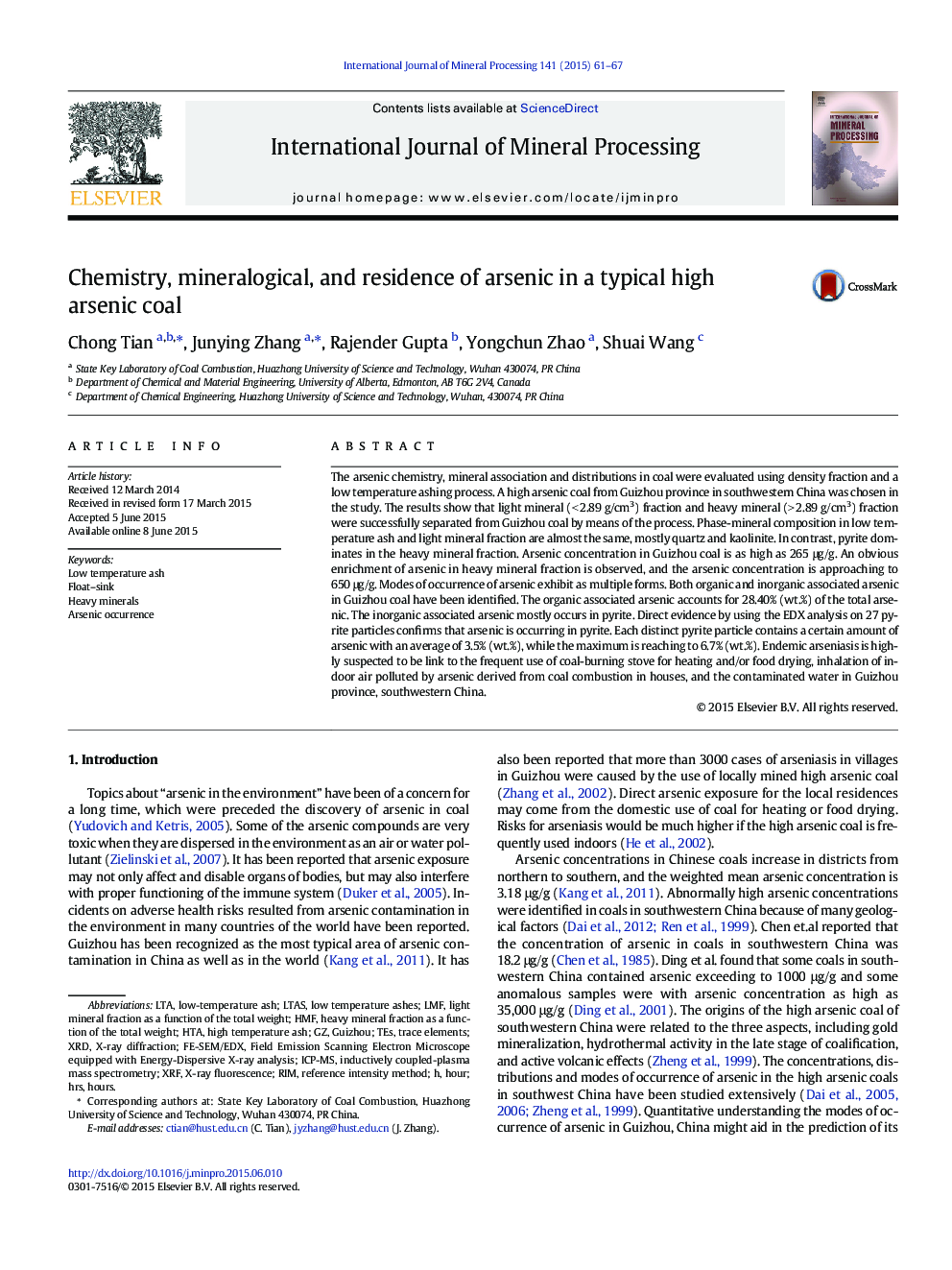| کد مقاله | کد نشریه | سال انتشار | مقاله انگلیسی | نسخه تمام متن |
|---|---|---|---|---|
| 213865 | 1425792 | 2015 | 7 صفحه PDF | دانلود رایگان |
• Low temperature ashing plus density fraction was applicable for mineral separation in coal.
• Pyrite dominates in heavy mineral fractions from the Guizhou coal.
• Organic associated and pyrite associated arsenic are the two major forms in the Guizhou coal.
• Arsenic occurrence in pyrite was directly identified by the FE/SEM–EDX measurement.
The arsenic chemistry, mineral association and distributions in coal were evaluated using density fraction and a low temperature ashing process. A high arsenic coal from Guizhou province in southwestern China was chosen in the study. The results show that light mineral (< 2.89 g/cm3) fraction and heavy mineral (> 2.89 g/cm3) fraction were successfully separated from Guizhou coal by means of the process. Phase-mineral composition in low temperature ash and light mineral fraction are almost the same, mostly quartz and kaolinite. In contrast, pyrite dominates in the heavy mineral fraction. Arsenic concentration in Guizhou coal is as high as 265 μg/g. An obvious enrichment of arsenic in heavy mineral fraction is observed, and the arsenic concentration is approaching to 650 μg/g. Modes of occurrence of arsenic exhibit as multiple forms. Both organic and inorganic associated arsenic in Guizhou coal have been identified. The organic associated arsenic accounts for 28.40% (wt.%) of the total arsenic. The inorganic associated arsenic mostly occurs in pyrite. Direct evidence by using the EDX analysis on 27 pyrite particles confirms that arsenic is occurring in pyrite. Each distinct pyrite particle contains a certain amount of arsenic with an average of 3.5% (wt.%), while the maximum is reaching to 6.7% (wt.%). Endemic arseniasis is highly suspected to be link to the frequent use of coal-burning stove for heating and/or food drying, inhalation of indoor air polluted by arsenic derived from coal combustion in houses, and the contaminated water in Guizhou province, southwestern China.
Journal: International Journal of Mineral Processing - Volume 141, 10 August 2015, Pages 61–67
